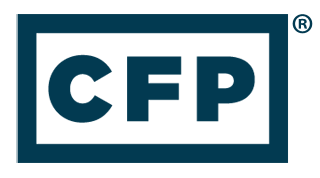Choosing Dental Insurance
Matching you with the best dental insurance plans.
Proper dental care and dental insurance can be an important component of our well-being. As with all insurance-related decisions, there are multiple facets that should go into your decision when purchasing dental insurance for yourself, your family, your business, or your employees. And, there are many types of dental insurance plans to consider such as a PPO (Preferred Provider Organizations), HMO (Health Maintenance Organization), dental indemnity insurance plans, and discount dental plans.
Why is Dental Insurance Important.
Dental insurance coverage of some kind can help you ensure the health of your teeth and gums. Unfortunately, if you are bearing the full brunt of the cost of dental care you may find it difficult to pay your dentist bills. Without dental insurance coverage, you may be tempted to skip regular cleanings and checkups, a decision that could lead to serious dental health problems.

Types of Dental Insurance Coverage:
Similar to medical insurance plans, dental insurance policies are often categorized as either indemnity or managed-care plans. The major differences are concentrated around out-of-pocket costs, choice of dental care providers, and how bills are paid.
Typically, indemnity coverage offers a broader selection of dental care providers than managed-care policies. With an indemnity policy, the carrier pays for covered services only after it receives a bill, which means that you may have to pay upfront and then obtain reimbursement from your insurance carrier. Usually, managed-care policies maintain their own dental provider networks. Dentists participating in a network agree to perform services for patients at pre-negotiated rates and usually will submit the claim to the dental insurance company for you.
Basic Dental Insurance Coverage – What is Included?
Understanding what is covered by your dental insurance can be challenging. Coverage differs from policy to policy and from provider to provider. Read the fine print of your policy or agreement to find out what your dental insurance covers. In general, basic dental insurance coverage includes three categories:
- Preventive and diagnostic dental care: Almost all dental plans and dental insurance policies cover basic dental costs that are meant to prevent dental problems. For the policyholder that means, most plans cover a large part or all of the dental costs associated with basic services such as cleaning, checkups, and other dental procedures meant to prevent tooth and gum disease. This coverage is important because it encourages people to seek regular dental care, which can prevent more complicated and costly problems.
- Basic dental care and dental procedures: Most dental plans and dental insurance also cover basic dental procedures such as fillings, tooth extractions, fixing chipped teeth, and other such basic procedures. However, basic dental care varies from one provider to another. In general, since providers cover a significant portion of basic dental care, it makes sense to select a dental care insurance provider that covers as many dental care basics and procedures as possible.
- Major dental care: While not all dental insurance plans cover major dental care, some do cover at least a portion of these costs. Major dental care can include procedures such as dental surgery, orthodontics, denture work, and other large, expensive dental procedures. If you will require major dental care at some point in the future you may wish to look for a provider willing to pay for as large a percentage of this type of care as possible.
This is a brief overview of the coverage that can be included in a Dental Insurance policy. You should read a policy thoroughly before purchasing any insurance policy.

Why is dental insurance important?
Dental insurance is important because it helps you manage and lower the cost of maintaining your oral health — and good oral health is strongly tied to your overall health.
Here are the main reasons why dental insurance matters:
1. It reduces out-of-pocket costs.
Without insurance, even a basic dental cleaning can cost $100–$300.
More serious procedures (like crowns, root canals, braces) can cost hundreds or thousands of dollars each.
Insurance covers a big chunk of these costs, making dental care much more affordable.
2. It encourages preventive care.
Most plans cover cleanings, exams, and X-rays at 100%, meaning you’re motivated to get regular checkups.
👉 Regular cleanings can catch problems early (like small cavities) before they turn into expensive, painful emergencies (like root canals).
3. It protects you from unexpected major costs.
If you suddenly need a tooth extraction, surgery, or major repair, the bills without insurance can be overwhelming.
Dental insurance acts like a safety net to cushion those unexpected expenses.
4. Good dental health = better overall health.
Poor oral health is linked to serious problems like:
Heart disease
Diabetes complications
Pregnancy issues
Infections that spread to other parts of the body Insurance makes it easier to keep your mouth — and your body — healthy.
5. It’s often affordable.
Compared to medical insurance, dental insurance is relatively cheap.
Premiums can be as low as $20–$50 a month, depending on the plan.
In short:
✅ Saves money
✅ Promotes regular checkups
✅ Prepares you for emergencies
✅ Helps protect your whole-body health
How much will insurance pay?
Let’s say you have this dental insurance plan:
Monthly premium: $30
Annual deductible: $50
Annual maximum: $1,500
Coverage:
Preventive care: 100% covered (no copay)
Basic procedures: 80% covered
Major procedures: 50% covered
Example 1: You go for a routine cleaning and checkup
Cost of cleaning and X-rays: $150
Preventive care is covered 100%, so…
You pay $0 (assuming you’re using an in-network dentist).
Example 2: You need a cavity filling
Cost of filling: $200
First, you must meet your deductible.
You haven’t had any other treatment yet, so you pay the first $50 (deductible).
That leaves $150 remaining.
Insurance covers 80% of $150 = $120.
You pay $30 (your 20% share).
✅ So in total for the filling, you pay $80 ($50 deductible + $30 coinsurance).
Example 3: You need a crown
Cost of crown: $1,000
Major procedure = 50% coverage.
You’ve already met your deductible (from the filling).
Insurance pays $500 (50% of $1,000).
You pay $500.
✅ Plus, this $1,000 now counts toward your $1,500 annual max.
Important to note:
After insurance pays $1,500 total in benefits for the year, you must pay 100% of anything else until your policy renews.
Some plans have waiting periods for expensive work like crowns — you might have to be enrolled for 6–12 months first.
Need a personalized insurance plan solution?
There are many factors involved in selecting an insurance plan and coverage can vary from carrier to carrier so the assistance of an experienced insurance professional can usually help you find just the right insurance plan regardless of the type of insurance you are looking for.
For the best results, I always recommend you work with a licensed insurance professional who can explore all your options for the policy you are shopping for. If you’d like my assistance I’m just a phone call or email away.






